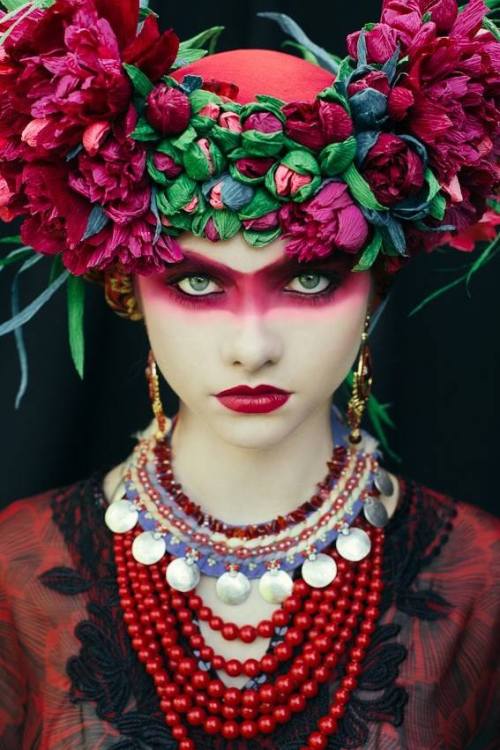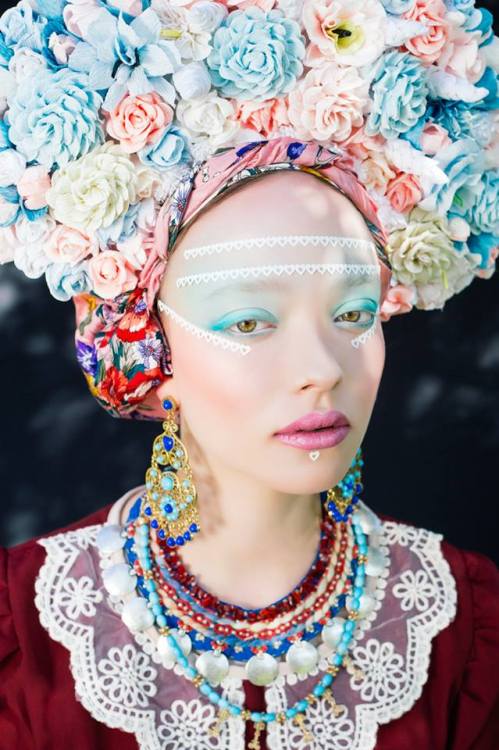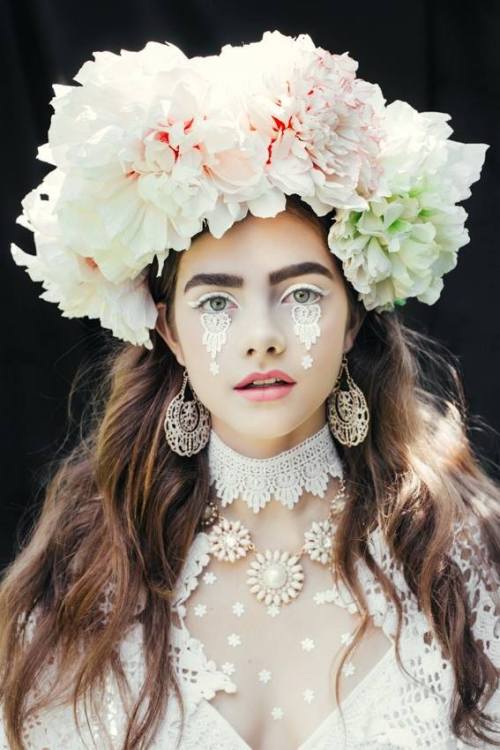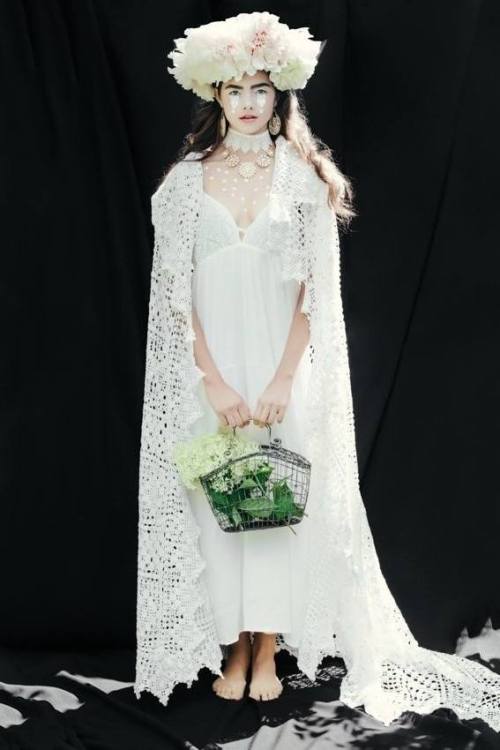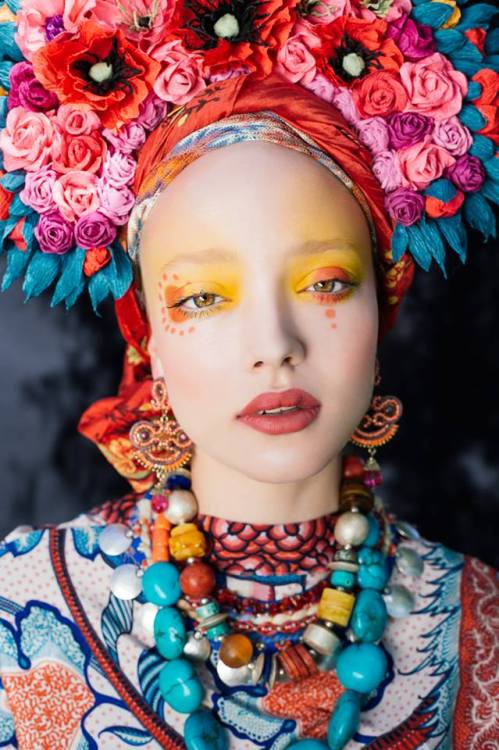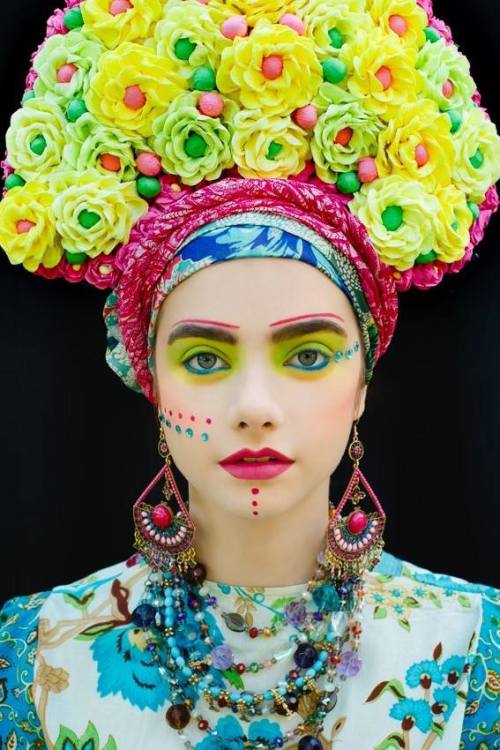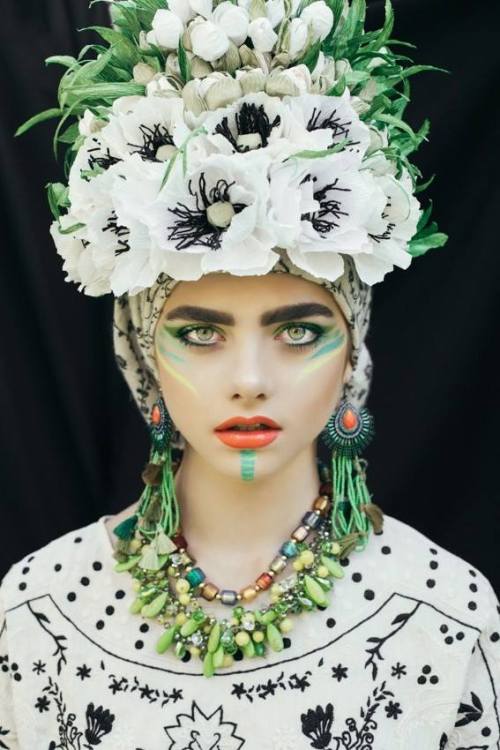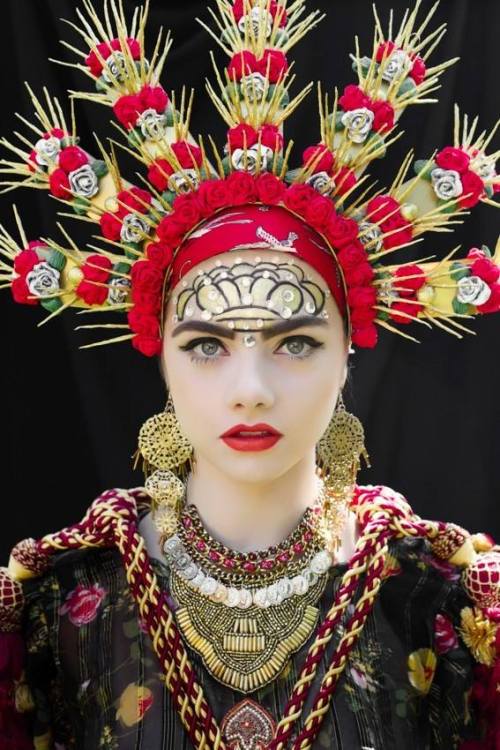lamus-dworski:Etno series by the make-up artist Beata Bojda from Poland. Photography: Ula Kóska.“In
lamus-dworski:Etno series by the make-up artist Beata Bojda from Poland. Photography: Ula Kóska.“In the folk culture - Polish wreath and bunches of flowers were a part of both religious and secular ceremonies such as marriage, funeral, festivals or Easter. In late 19th and early 20th century when industry developed decorative papers and cigarette - new branch of handicraft called ‘handicraft paper’ developed. ’Handcraft paper’ has been used in the manufacture of ornaments, especially during the twentieth anniversary of interwar. Moreover, despite of traditional head wreaths and ornaments, frames of sacred images, roadside shrines and “spiders” (which was suspended from the ceiling) were decorated with paper flowers. Over time, handicraft techniques developed, such as cutting, twisting, rolling, or creating ‘candies’. In my project I used techniques coming from Opoczno area, although this technique it is also an integral part of Malopolska and subcarpathian tradition. The most abundant testimony of ‘paper handicraft’ tradition be found in the Folklore Museum in Sanok and in the village of Tokarnia.Flowers were made by traditional hand method of twisting. All elements, flowers was glued to previously prepared cardboard form. Every portrait refers to a certain ethnic style (not literally) and is consistent in terms of colour styling. In each portrait I used the vintage textiles and clothes that I adapted to the needs of the portrait. Contemporary jewelry, partly bought by me, partly borrowed from friends fulfills the stylizations. Make-up is the final result of combining all the individual elements of styling. I used traditional methods of painting but also pieces of lace, fabric and other ornaments were glued.“ [source of text] -- source link
Tumblr Blog : lamus-dworski.tumblr.com
